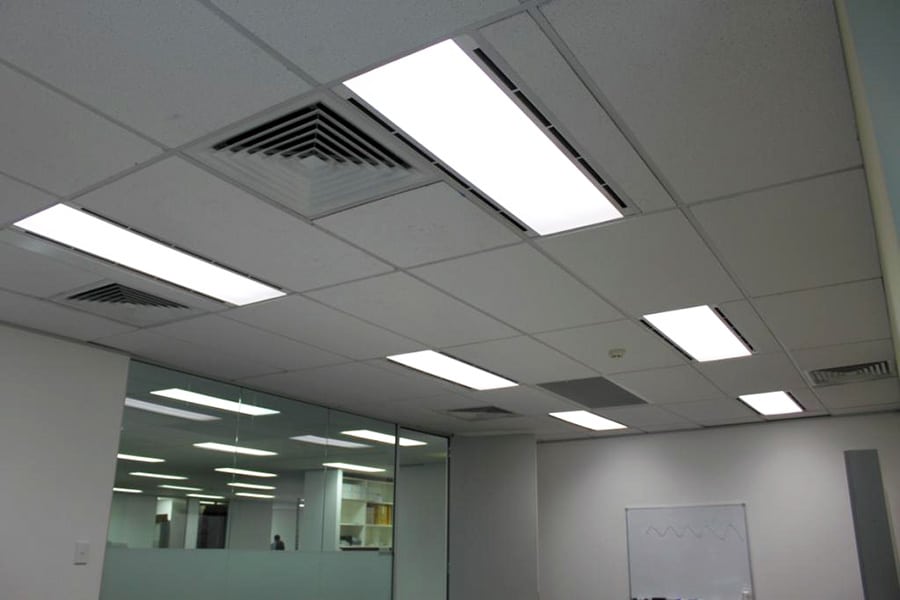There are many variations of fluorescent light fixtures in office spaces, but all of them have one common goal: to light the workspace efficiently for optimal worker performance. There are two common styles of workspace lighting; prismatic and parabolic.
The differences between prismatic and parabolic lighting are slight, but some argue that one yields better results more efficiently. It’s important to note that there is no “standard” when it comes to office lighting fixtures sizes. The two main styles can come in a variety of shapes and sizes.
Prismatic Lens
“Prismatic” often refers to the pattern of prism-like shapes with triangular bases. The pattern is intended to disperse light into a spectrum and spread a concentrated light source over a larger surface area. Prismatic plastic light lenses can also help decrease the glare off of a bare bulb, however the light distribution is uneven compared to other lighting products.
Parabolic Louvers
“Parabolic” refers to likeness to a “parabola”, a conic section created from the intersection of a right circular conical surface. The matrix design of a metal parabolic louver is unique in that it distributes a concentrated source of light. A parabolic louver could be described as a eggcrate, or metal “ice cube tray”.
The louvers are commonly placed in recessed fixtures, and are popular for their ability to reduced the brightness and glare of bare bulbs and evenly distribute the lighting.
Using Fluorescent Light Filters
While prismatic and parabolic overlays can help with reducing glare, neither solution eliminates it. Often times, the best solution is to employ fluorescent light filters. Not only do they completely remove the fluorescent light glare, they also block UV radiation and create more natural light.
Fluorescent light filters can be installed on both prismatic and parabolic louvers. Fluorescent light covers are usually the best option as they can be installed permanently on the fixture and can filter multiple fluorescent bulbs.
Installing Prismatic Lens Overlays
When installing fluorescent light covers in conjunction with prismatic lenses, you want to remove the prismatic lens from the fixture.
Use the lens as a cutting template to cut your overlay panel to size, then tape the overlay panel to the lens (we recommend taping the glossy side up, facing the bulb.
Installing Parabolic Overlays
Installing a fluorescent light filter on a parabolic louver is also a simple task. Simply open your fixture and measure the length and width of the louver.
Cut the overlay filter to size and tap to the inside of the louver (again, glossy side up). Close the fixture and enjoy the natural, glare-free light.

